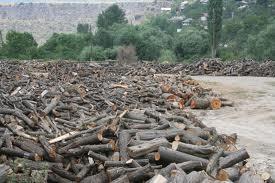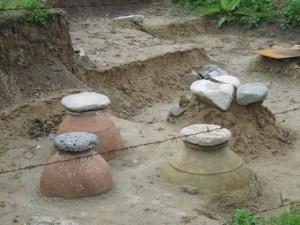Teghut Concerns: Archeologist says ancient sites another reason against mining in endangered forest
Gohar Abrahamyan
Source - http://armenianow.com/social/environment/35031/save_teghut_protest_copper_mine
Ecologists and archaeologists in Armenia are once again warning that a copper mine development in Teghut will cause damage not only to the local environment, but also to the historical and cultural sites that have been discovered around the area.
It is now more than four years that environmentalists have been trying to stop the mining operation near the village in Armenia’s northern Lori province. Green activists and conservationists have warned that an industrial extraction of copper and molybdenum in the area will irreversibly harm the ecology of the Teghut forest, which is home to as many as 55,000 rare and 45,000 valuable trees, as well as plants and animal species that are registered in the Red Book of Endangered Species.

Now it is being said that the expansion will also cause damage to a few historical sites recently discovered near Teghut. Since 2009, on the initiative of the Institute of Archeology and Ethnography of Armenia’s National Academy of Sciences and with the funding of Valex Group (the company mining the area) a 14-member group has conducted excavations in Teghut during which, according to specialists, monuments of “great historical and scientific significance” were discovered.
Head of the Teghut archaeological expedition, candidate of historical sciences Suren Hobosyan says that the presence of numerous historical and cultural monuments on a territory of about 1,500 hectares is conditioned by the fact that this part of Armenia was once one of the most fertile lands and was used by people in ancient times.
The archeologist says that the excavations had already revealed three monuments estimated to be 5,000 years old, the early Bronze Age settlements, which are an absolute novelty in the history of the Armenian people’s culture. As new monuments they have already been registered by the Agency for the Protection of Monuments.

However, what the archeologist is concerned about most is the Kura-Arax cultural layer in Kharatadzor, a medieval church, that has a history of about 3,000-4,000 years. Under the mining project, this layer is expected to remain under the tailings.
“Monuments remaining under tailings are in the worst condition here. If they are buried there, we’ll lose them as we already lost a structure reminiscent of a tonir in a medieval foundry in Dukanadzor, where the mine is located. That site was destroyed because of the construction work there,” says Hobosyan.
Although it was decided to move one of the monuments in Kharatadzor to the Shnogh River, the archeologist says this way the monument “loses its point” as it won’t stand in its original place anymore.
According to the archeologist, samples of Hellenic culture discovered in several areas will be conserved, as no work is planned in those territories. He says everything will be done for them to be duly presented to the public.
Environmentalist Apres Zohrabyan, a member of the Trchkan civil initiative that last year managed to get the government to cancel plans for the construction of a hydro-power plant on an endangered waterfall, suggests that cultural tourism be developed in the area instead of mining. He says it will be economically beneficial for the area and for Armenia’s tourist industry as a whole.
Meanwhile, lawyer Ruzanna Ghazaryan, who was also a Trchkan activist, says that in 1995 Armenia adopted a law on environmental impact assessment, which says that even an environmental assessment must not be conducted “in the territory where there is a historical-cultural monument.”
“In this case, perhaps mistakenly, the law has been bypassed, therefore, they must cancel or rescind the permit or at least take measures to minimize the threat to historical and cultural monuments,” the lawyer says.